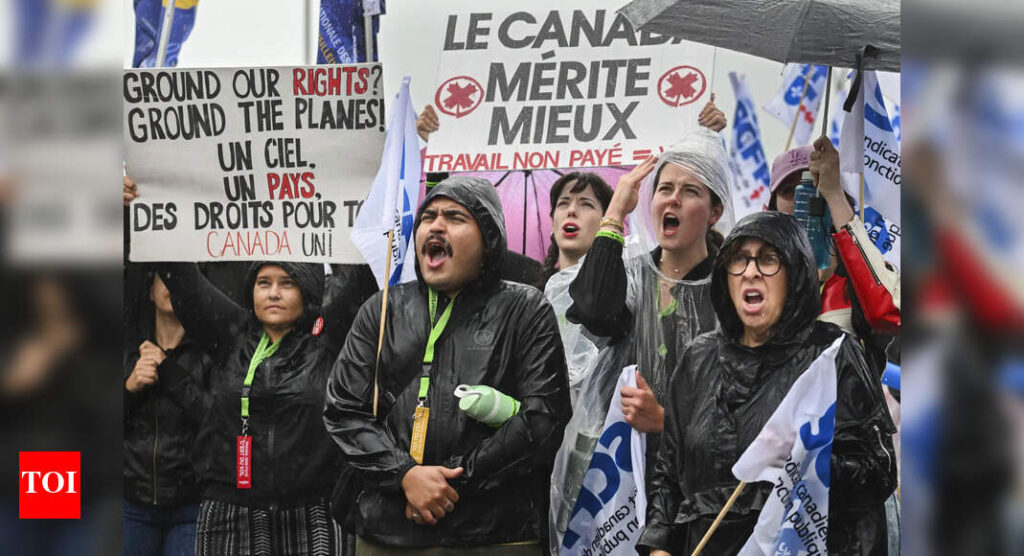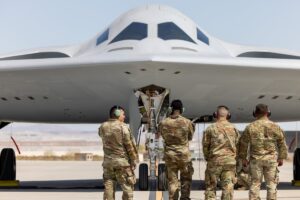
Air Canada flight attendants continue their strike for the third consecutive day, leaving hundreds of thousands of passengers stranded during the peak summer travel season. Despite a back-to-work order issued by the Canada Industrial Relations Board (CIRB), the union remains steadfast in its refusal to comply, intensifying the standoff.
More than 10,000 Air Canada employees have walked off the job, demanding better wages and working conditions. The strike, which began early Saturday, has disrupted the travel plans of approximately 130,000 passengers daily, as Air Canada suspended operations due to the ongoing labor dispute.
Union’s Defiant Stance
CUPE National President Mark Hancock, addressing a briefing on Monday, emphasized the union’s resolve. “There’s no limit. We’re going to stay strong. We’re going to stay committed to making sure that those workers can do the job they love doing and actually be able to afford a roof over their heads, to afford caring for their families,” Hancock declared.
He further stated, “And if it means folks like me going to jail, then so be it. If it means our union being fined, then so be it. We’re looking for a solution here. Our members want a solution here. But that solution has to be found at a bargaining table.”
The union’s defiance was symbolically demonstrated when Hancock publicly tore up a copy of the initial back-to-work order outside Toronto’s Pearson International Airport, drawing cheers from picketing workers.
Government and Airline Response
Prime Minister Mark Carney has urged both parties to resolve the dispute swiftly, highlighting the significant disruption caused to Canadians and international visitors. “We are in a situation where literally hundreds of thousands of Canadians and visitors to our country are being disrupted by this action,” Carney stated, stressing the importance of fair compensation and resolution.
Air Canada, meanwhile, has warned employees that those defying the order may face personal accountability. The airline had planned to resume operations on Sunday evening but was forced to suspend these plans when the union refused to return to work.
Demands and Offers
The union is pressing for wages comparable to those at Air Transat and compensation for ground duties, such as boarding passengers. Air Canada’s proposal included a 38% increase in total compensation over four years. However, CUPE rejected the offer, arguing that the first-year raises were insufficient to keep up with inflation.
Flight attendants initially walked off the job after rejecting Air Canada’s request to enter government-directed arbitration, which would have allowed a third party to determine the terms of the contract.
Historical Context and Expert Opinions
Labor disputes in the airline industry are not unprecedented. Historically, strikes have often centered around issues of compensation, working conditions, and job security. Experts suggest that the current standoff reflects broader economic pressures, including inflation and the rising cost of living, which have exacerbated tensions between employers and unions.
Professor Jane Doe, a labor relations expert at the University of Toronto, noted, “This strike is emblematic of the challenges many industries face in balancing fair employee compensation with operational costs. The outcome of this dispute could set a precedent for future negotiations across the sector.”
Looking Ahead
With no immediate resolution in sight, the strike is expected to continue, leaving passengers in limbo and the government considering potential legal or legislative measures to end the impasse. The situation remains fluid, with both sides under pressure to reach a compromise that addresses the union’s demands while allowing Air Canada to resume normal operations.
As the strike enters its fourth day, stakeholders and observers alike will be closely monitoring developments, hoping for a breakthrough that can restore order to Canada’s skies.





